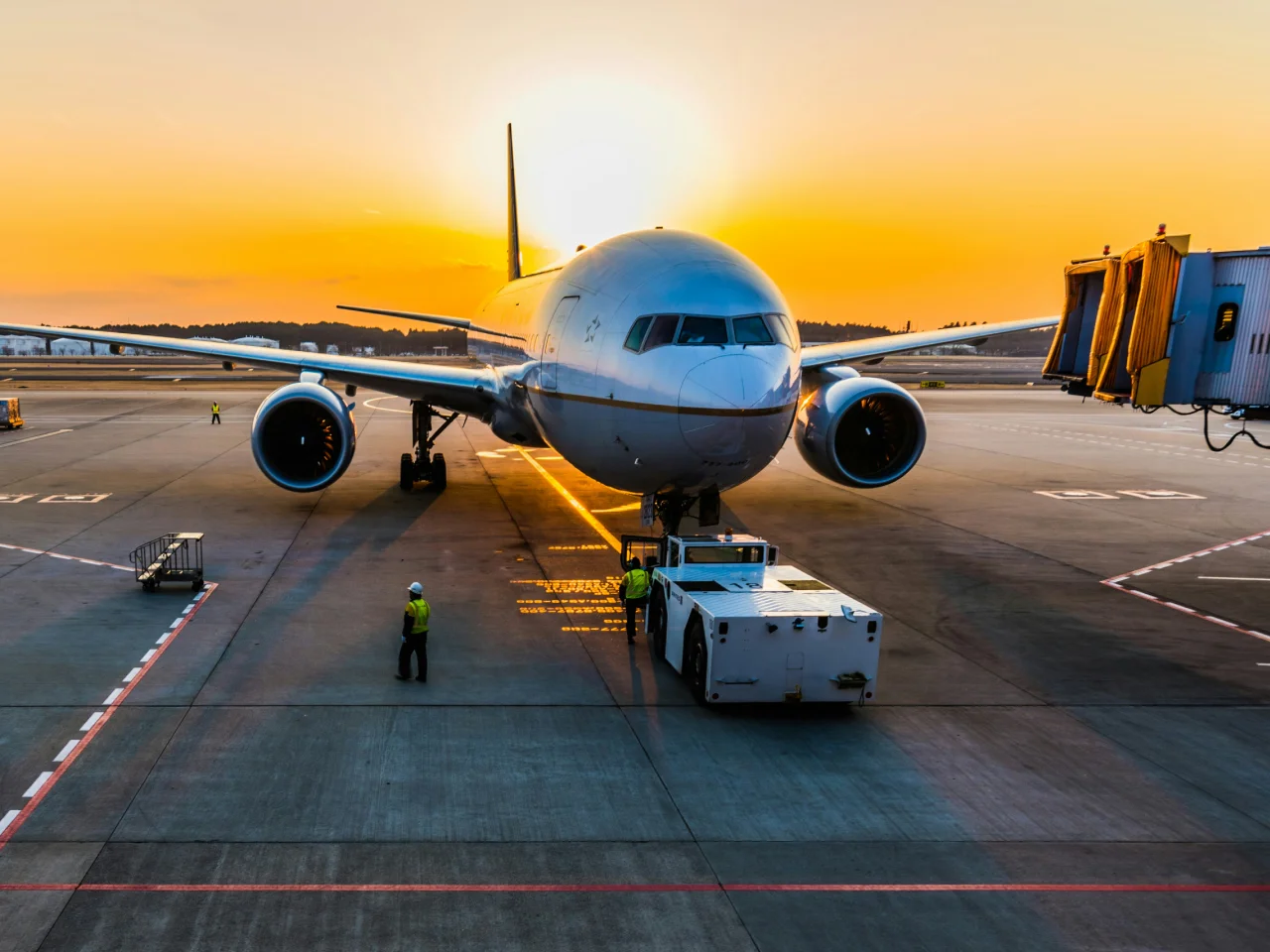
Pilot Training in Philippines For South African Students
Why Aspiring South African Pilots Choose to Fly Abroad for Training?
1. Limited Availability of Training Facilities: South Africa, despite its growing aviation sector, still has a limited number of flight training schools compared to the demand. This leads to long waiting lists for aspiring pilots, which can delay their training significantly. The scarcity of training facilities can be frustrating for those eager to begin their aviation careers promptly.
Moreover, the distribution of these facilities might not be equitable across the country, meaning some regions have even fewer options available. As a result, aspiring pilots from such areas may find it more practical to seek training abroad where there are more accessible options.
2. High Costs: Flight training in South Africa can be expensive due to various factors. Aircraft rental fees, instructor fees, and administrative costs contribute to the overall expense. Furthermore, fluctuations in fuel prices and maintenance costs can further inflate the training expenses, making it financially burdensome for many aspiring pilots.
Additionally, the cost of living in South Africa, including accommodation and transportation, adds to the financial strain. Some aspiring pilots find it more cost-effective to pursue training abroad in countries where fees may be lower and living expenses more manageable.
3. Quality of Training: While South Africa boasts some excellent flight training schools, some aspiring pilots seek training abroad for access to even higher quality facilities, experienced instructors, and modern aircraft. These resources may not be readily available or up to their standards in South Africa.
Training abroad can provide exposure to different teaching methodologies, aircraft technologies, and aviation regulations, enriching the learning experience. Moreover, international training may offer a broader perspective on aviation practices, preparing pilots for diverse operational environments.
4. Global Recognition: Pilots who train abroad may benefit from the international recognition of their qualifications. This recognition can enhance their employment prospects both domestically and internationally. Some airlines and aviation companies prefer candidates with training from renowned international institutions, considering it a testament to their competency and adaptability.
Additionally, training abroad may open doors to opportunities for international employment, allowing pilots to explore career paths beyond their home country. This global perspective can be invaluable in a dynamic and interconnected aviation industry.
Why South African Students Choose the Philippines for Pilot Training?
1. Affordability: The cost of pilot training in the Philippines is often more affordable compared to countries like the United States or Europe. This affordability stems from lower operational costs, including aircraft maintenance, fuel prices, and instructor salaries. As a result, South African students can pursue their dream of becoming pilots without incurring exorbitant expenses.
Moreover, the favourable exchange rate between the South African Rand (ZAR) and the Philippine Peso (PHP) further enhances the affordability of training for South African students. This cost advantage makes the Philippines an attractive option for those seeking quality training without financial constraints.
2. English Proficiency: English is widely spoken and used in aviation in the Philippines, making it easier for South African students to communicate effectively during their training. Clear and precise communication is essential in aviation, especially during flight operations and radio transmissions. By studying in an English-speaking environment, South African students can develop their language skills and confidently navigate the global aviation community.
Furthermore, the standardized use of English facilitates seamless integration into international aviation environments, where English serves as the primary language of communication. This linguistic proficiency enhances the employability of South African pilots in both domestic and international markets.
3. High-Quality Training Facilities: The Philippines boasts several CAAP-accredited flight training schools equipped with modern facilities and experienced instructors. These schools adhere to stringent safety standards and regulatory requirements, ensuring the delivery of quality training to aspiring pilots. The availability of state-of-the-art flight simulators, well-maintained aircraft fleets, and dedicated training staff contributes to a conducive learning environment.
Additionally, some flight schools in the Philippines offer specialized training programs, such as airline-oriented courses or advanced flight training, catering to the diverse needs and aspirations of South African students. This diversity of training options allows students to tailor their education to align with their career objectives and interests.
4. Favourable Climate: The Philippines offers favourable flying conditions throughout the year, with consistent weather patterns conducive to flight training. Unlike regions experiencing extreme weather conditions or seasonal variations, the Philippines provides stable and predictable weather for most of the year. This climatic stability minimizes disruptions to training schedules and ensures continuous progress for aspiring pilots.
Additionally, the diverse geography of the Philippines, including coastal areas, mountainous terrain, and urban landscapes, offers students opportunities to experience various flying environments and develop versatile piloting skills. Exposure to different weather conditions and geographical features prepares pilots for real-world challenges they may encounter during their careers.
Is the Philippines Positioned to Become the Top Pilot Training Destination for South African Students?
While the Philippines offers several advantages for pilot training, it may not necessarily become the top destination for all South African students. Factors such as personal preferences, cost considerations, and individual circumstances play a significant role in choosing a training location. However, the Philippines has the potential to be a top choice due to its affordability, quality training facilities, and English proficiency.
The Philippines has made significant strides in developing its aviation industry and establishing itself as a prominent hub for pilot training in Asia. With its growing number of flight training schools, experienced instructors, and modern training facilities, the Philippines offers a competitive alternative to traditional aviation training destinations.
Moreover, the strategic location of the Philippines in the Asia-Pacific region enhances its appeal as a gateway to the global aviation market. South African students seeking international exposure and career opportunities may find the Philippines an attractive destination for pilot training due to its proximity to key aviation markets and emerging aviation hubs.
The continuous investment in aviation infrastructure, regulatory reforms, and industry partnerships further strengthens the Philippines’ position as a premier pilot training destination. By leveraging its comparative advantages and addressing the evolving needs of the aviation sector, the Philippines can solidify its status as a preferred choice for South African students seeking quality pilot training.
Can South Africans become a pilot in the Philippines (PH)?
Yes, South Africans can pursue pilot training in the Philippines. However, they must meet the eligibility requirements set by the Civil Aviation Authority of the Philippines (CAAP) and comply with visa and immigration regulations. The CAAP imposes certain criteria to ensure the safety and competence of aspiring pilots undergoing training in the Philippines.
How much does it cost to study pilot in Philippines for South African students?
The cost of pilot training in the Philippines for South African students varies depending on factors such as the type of license being pursued, the flight school chosen, aircraft rental rates, instructor fees, accommodation, and living expenses. Generally, the total cost can range from $40,000 to $80,000 for a Private Pilot License (PPL) and upwards of $100,000 for a Commercial Pilot License (CPL) or Airline Transport Pilot License (ATPL).
Who is eligible for pilot training in the Philippines?
Eligibility criteria for pilot training in the Philippines typically include:
- Minimum age requirements (usually 17 or 18 years old)
- Educational requirements (high school diploma or equivalent)
- Medical fitness requirements (meeting CAAP medical standards)
- English language proficiency
- Compliance with visa and immigration regulations
Aspiring pilots must fulfill these requirements to enroll in a CAAP-accredited flight training program and commence their training in the Philippines.
Is the Philippines a good country for pilot training for South African students?
The Philippines can be a good country for pilot training for South African students due to its affordability, high-quality training facilities, favourable weather conditions, and English proficiency. However, students should thoroughly research flight schools, consider their personal preferences and circumstances, and ensure compliance with all regulatory requirements before making a decision.
Which country is cheapest for pilot training for South African students?
The Philippines is often considered one of the cheapest countries for pilot training for South African students due to its relatively low cost of living and affordable training fees compared to other popular training destinations like the United States or Europe. However, the actual cost can vary depending on individual preferences, training requirements, and other factors. It’s essential to consider the overall value and quality of training rather than solely focusing on cost.
OVERSEAS PILOT LICENSE CONVERSION – Convert Philippines Licence into South African Licence
Converting a pilot license obtained in the Philippines into a South African license involves several steps, including:
- Verification of the validity of the Philippine license by the South African Civil Aviation Authority (SACAA): The SACAA verifies the authenticity and validity of the Philippine pilot license to ensure compliance with South African aviation regulations and standards.
- Completion of any additional requirements or examinations specified by the SACAA: Depending on the equivalence of the Philippine license to the South African license, additional assessments or examinations may be required to demonstrate proficiency and competency in accordance with SACAA regulations.
- Submission of necessary documentation, including proof of flight experience and training records: Applicants must provide documentation supporting their flight experience, training history, and qualifications obtained in the Philippines. This may include logbooks, training certificates, and endorsements from authorized instructors or flight schools.
- Payment of applicable fees for the license conversion process: Applicants are required to pay the prescribed fees for the license conversion process, which may vary depending on the specific requirements and procedures established by the SACAA.
- Issuance of the South African pilot license upon successful completion of the conversion process: Upon satisfactory completion of the license conversion process and fulfillment of all requirements set by the SACAA, the South African pilot license will be issued to the applicant. This license grants the holder the legal authority to operate as a pilot within the jurisdiction of South Africa and is subject to renewal and regulatory compliance.
Overall, the license conversion process aims to ensure the seamless transition of pilots trained in the Philippines to the South African aviation regulatory framework, thereby facilitating international mobility and recognition of qualifications.
Free Career Guide

Want to find out more about our pilot courses?
Download our free eBook to learn all about pilot training in the Philippines, including the qualifications needed, the training process, available courses, and career opportunities. Find out how you can take the first step toward a rewarding career in aviation.






